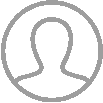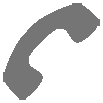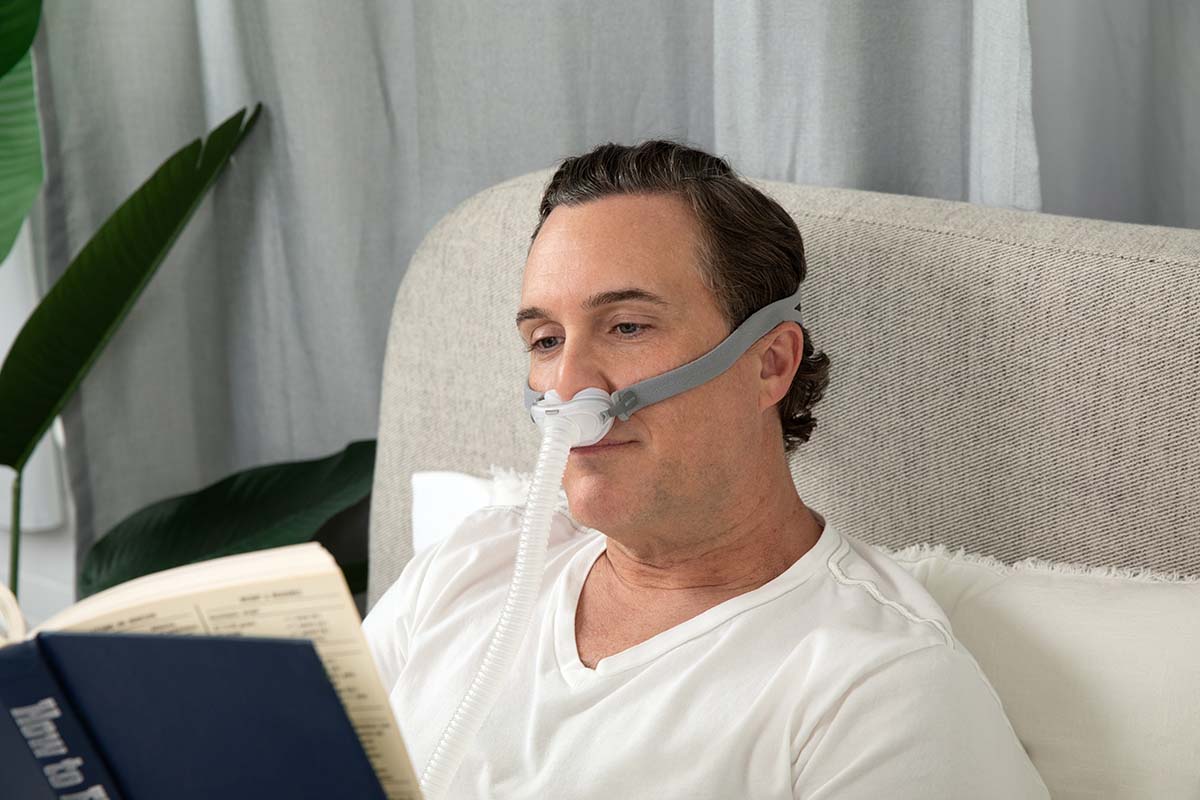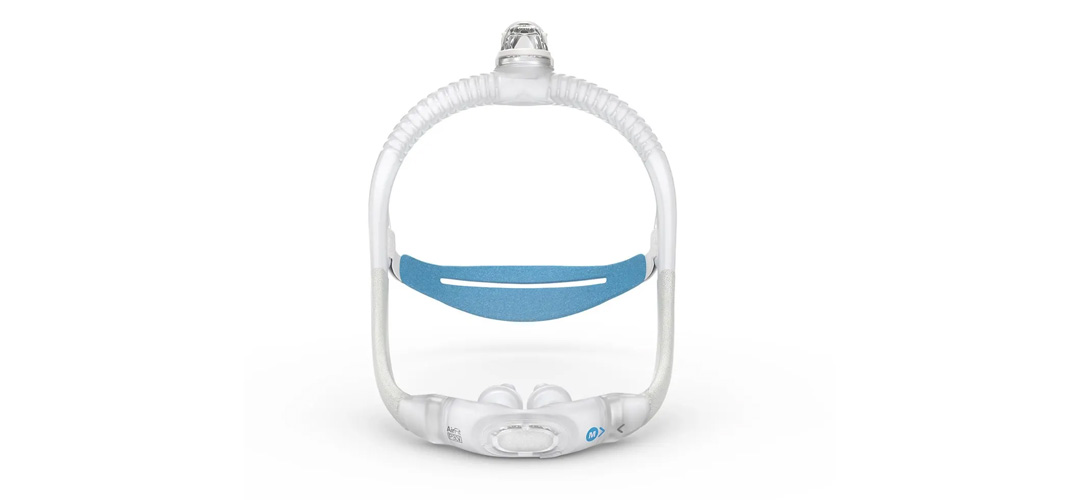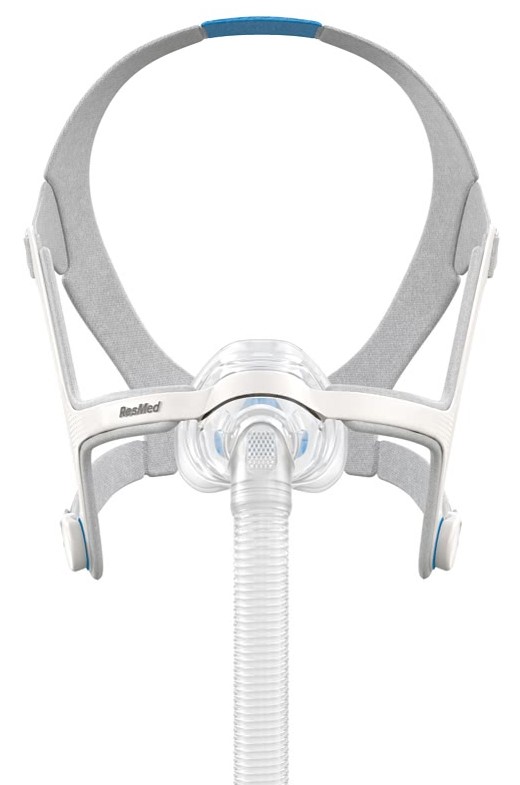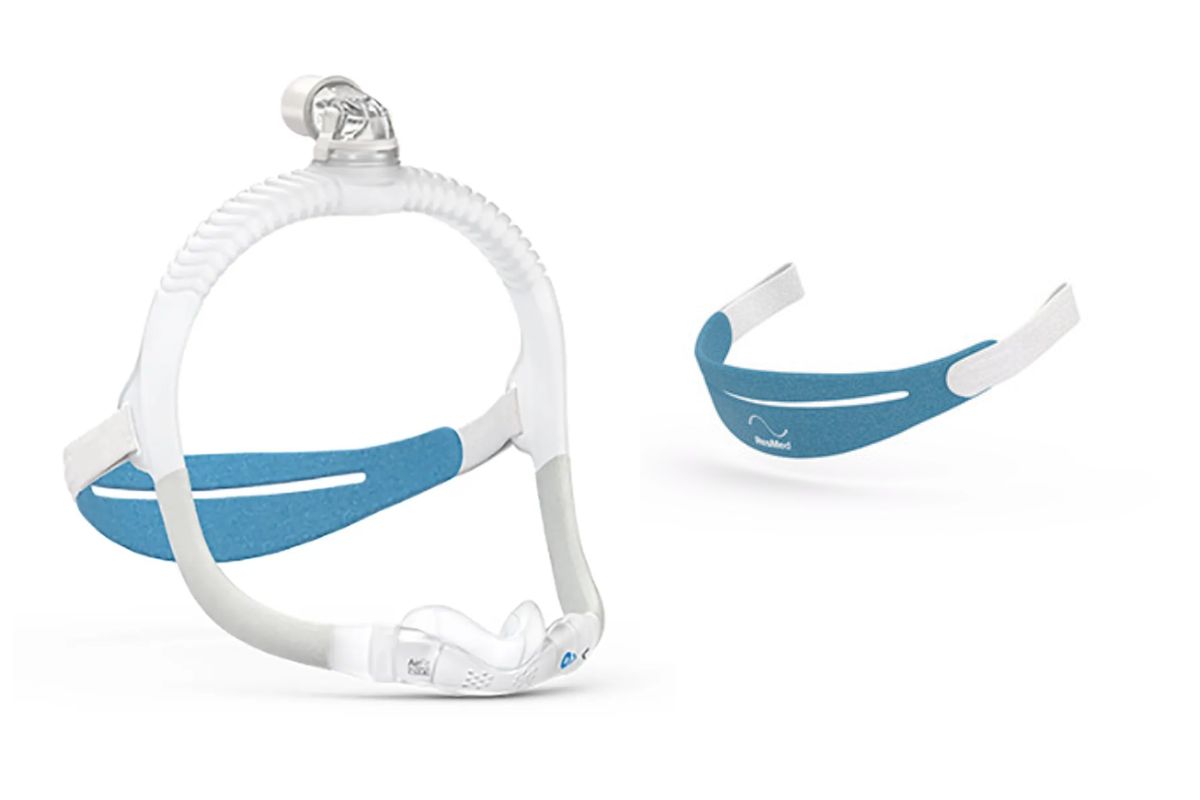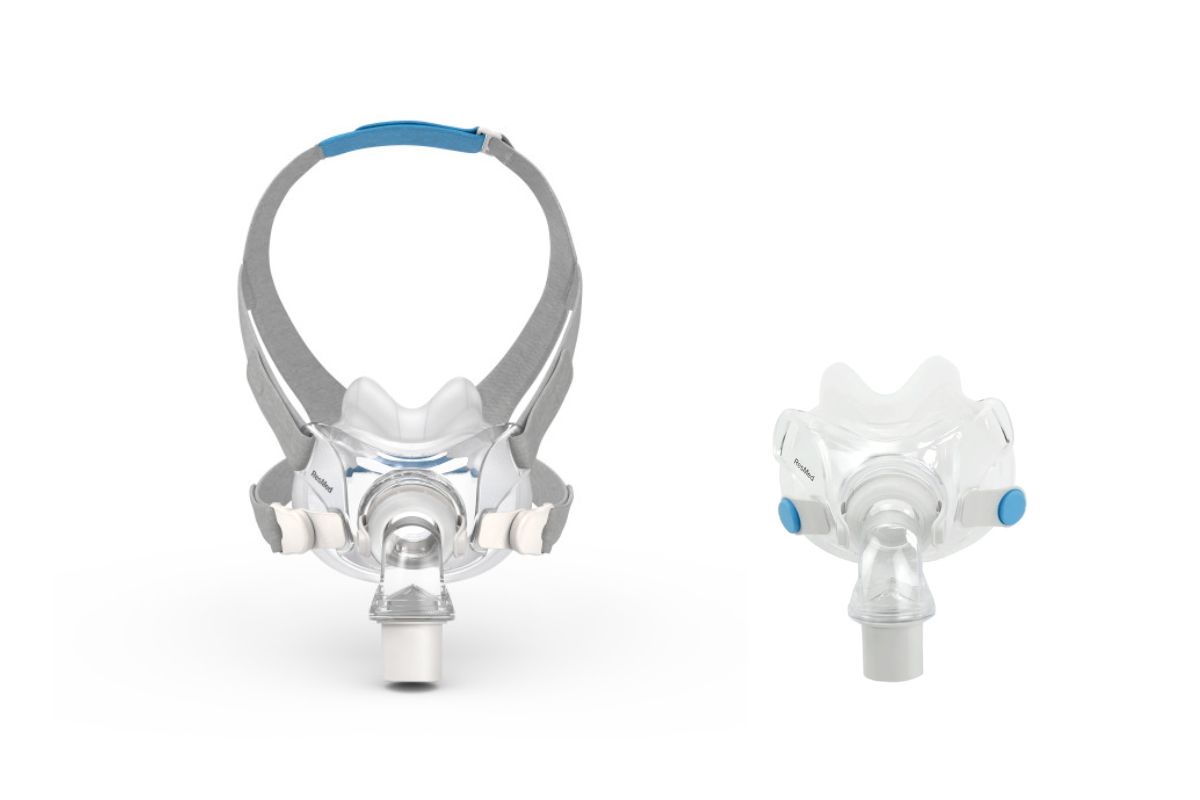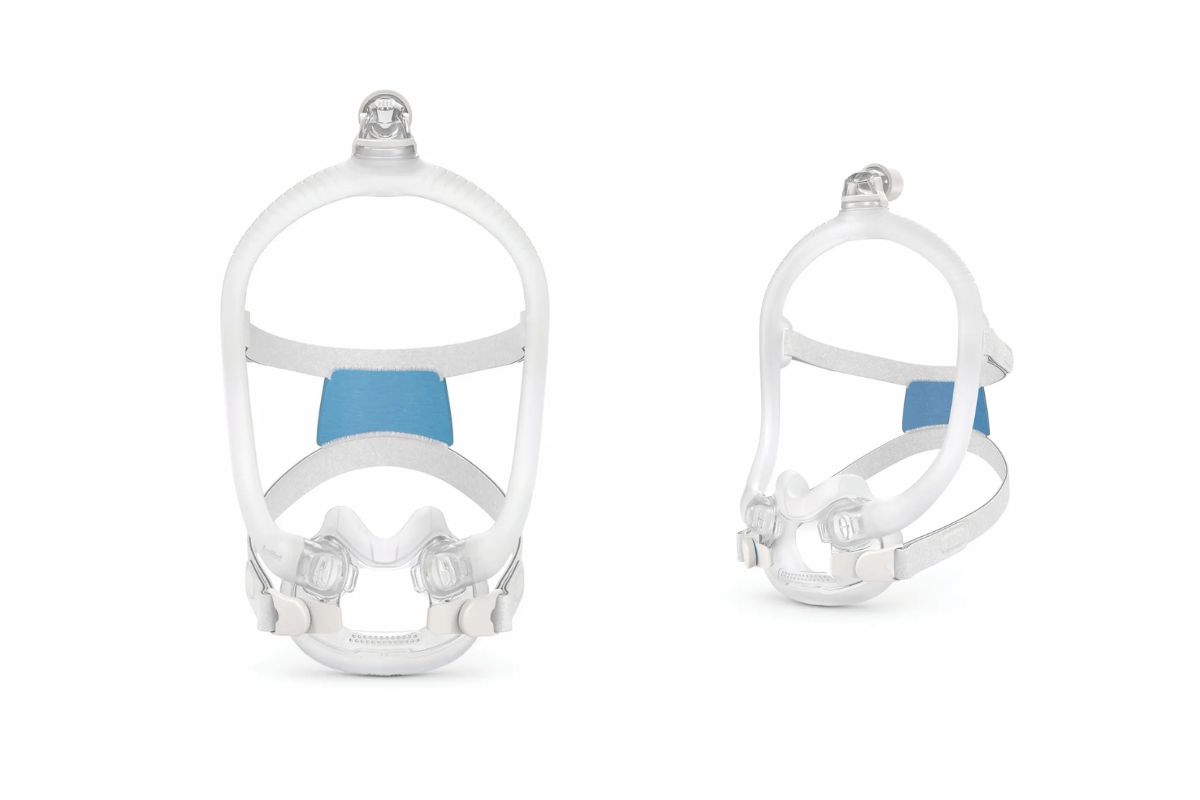Why We Picked These CPAP Masks and What You Should Consider When Choosing an Ideal Mask for Side Sleeping
In picking these masks, we looked for options that were minimally intrusive and had designs made with active sleepers in mind. Starting with the most minimal mask designs, we think the nasal pillow masks listed above are some of the best options around for side sleepers.
Recognizing that some will prefer the more secure fit offered by a nasal mask, or won’t like the feeling of nasal pillows, we went on to recommend some nasal-style masks that are popular with side sleepers. And finally, recognizing that not all side sleepers can just breathe through their nose full time, we wanted to include our favorite low-profile full face masks for side sleeping to ensure that anybody can find a good mask fit.
Finding a mask that supports side sleeping is important not only because you should only consider masks that fit well to your breathing and sleeping style, but also because side sleeping is generally better than back sleeping for most people with sleep apnea and leads to fewer apnea events and a lower AHI.
Are There Benefits to Side Sleeping With a CPAP Mask?
When it comes to using a CPAP mask, your sleeping position can significantly impact the effectiveness of your therapy. Research has shown that side sleeping can be highly beneficial for those with sleep apnea, as it helps to keep the airway open and reduces the likelihood of obstruction. In fact, a study published in the American Journal of Respiratory and Critical Care Medicine found that side sleeping reduced the number of apnea events by up to 50% compared to back sleeping.
Improved Airflow and Reduced Apnea Events
As mentioned above, side sleeping can help keep your airway open, leading to improved airflow and reduced apnea events. This means that you’ll experience fewer interruptions in your sleep and wake up feeling more refreshed and energized.
Better Sleep Quality
With fewer apnea events and increased comfort, side sleeping can lead to better sleep quality overall. This, in turn, can improve your daytime alertness, cognitive function, and overall well-being. It also reduces GERD symptoms and can offer better spinal alignment, too!
What to Consider When Choosing a CPAP Mask
1. Mask Design and Minimal Contact
Side sleepers require a mask with minimal contact to avoid discomfort and maintain a proper seal throughout the night. Look for masks with a low-profile design, such as nasal pillows or minimal-contact nasal or full face masks. For example, the AirFit P10 Nasal Pillow and the DreamWear Nasal masks are both excellent options for side sleepers due to their minimal contact and lightweight design.
2. Secure and Comfortable Fit
As a side sleeper, you need a mask that stays in place and maintains a good seal, even when you change positions during the night. Look for masks with adjustable headgear and flexible cushioning that can adapt to your facial contours. The AirFit F30i Full Face mask is a great example of a mask that offers a secure and comfortable fit for side sleepers.
3. Hose Connection and Management
For side sleepers, a mask with a well-designed hose connection is essential to prevent tugging and ensure a comfortable night’s sleep. Masks with a rotating swivel or top-of-head hose connection, such as the DreamWear series of masks, can help reduce the chances of the hose getting tangled or causing discomfort during sleep.
4. Noise Level
Regardless of your preferred sleeping position, choosing a quieter mask is always a good idea, especially if you sleep with a partner. Opt for masks with a quiet venting system to minimize noise and ensure a peaceful night’s sleep for both you and your partner. Most modern CPAP masks have modern mesh diffuser vents that drastically quiet exhaled air and Resmed does a good job at quieting the night throughout their AirFit line of masks.
5. Your CPAP Pressure Settings
Of course, knowing your prescribed pressure settings is important to choosing a CPAP mask as well. If your pressure setting is under 12 cmH2O, congratulations! You can use just about any mask you think will work for you. If your pressure is 15 cmH2O or higher, you’ll likely start having issues with nasal pillow and nasal cradle-style masks, so it’s better to opt for a full face mask or nasal mask that completely encompasses your nose rather than resting beneath it.
6. Personal Preferences and Sleep Habits
Lastly, consider your personal preferences and sleep habits when choosing a CPAP mask for side sleeping. Are you a restless sleeper? Do you prefer a certain type of cushion material? Understanding your unique needs and preferences will help you find the perfect mask for a successful and comfortable CPAP therapy experience.
The Bottom Line: Finding the right CPAP mask for side sleepers means you should seek minimalistic masks with few touchpoints, flexible frames that adapt to different positions, and spinning tube connections, preferably at the top of the head. Always try to choose as minimal of a mask as you can depending on your breathing style. By taking these factors into account and exploring the recommended masks mentioned in this article, you’ll be well on your way to a comfortable and effective CPAP therapy experience as a side sleeper!
Tips for Finding the Best Fitting CPAP Mask
-
-
- Know How You Breathe: Understanding your breathing style is essential when looking for the best-fitting CPAP mask. Some sleep with their mouth open and don’t breathe through the nose, while others breathe through the nose only and don’t breathe through the mouth at all. Your breathing patterns will determine whether you need a full face mask, nasal mask, or nasal pillow mask.
-
- Use Fitting Guides or Buy a Fit Pack: Every CPAP mask has a printable guide that when compared to your face, indicates what size mask cushion you should buy for that specific mask type. Every mask and brand does things differently, so be sure to find the sizing guide for the mask you’re interested in. You should be able to locate the buying guide for each mask on its respective CPAP.com product page near the size selection menu. Alternatively, we recommend buying a fit pack each time you’re trying a new mask because fit packs include every available cushion size so you can feel the difference between them and choose what’s best for you.
-
- Consider Your Budget: CPAP masks come in a variety of shapes, sizes, and price points. Determine your budget before you start shopping, and keep in mind that investing in a high-quality mask can improve your overall therapy experience. Cheaper masks can work well, too, but may degrade faster or simply won’t provide the same level of therapy success, robbing you of restful sleep, increased energy levels, better mood regulation, and more of the benefits of CPAP therapy.
-
- Try Before You Buy: If possible, take advantage of mask fit finders or free return insurance policies offered by some CPAP mask retailers. This allows you to try different masks and find the one that fits you best without any financial risk. CPAP.com offers free return insurance on every mask via our 30-day satisfaction guarantee so that you can try any mask you’re interested in without having to commit to a mask that doesn’t work for you.
-
- Ease of Use: While it isn’t necessarily high on the list of importance, you should also be mindful of how complicated your mask will be to take apart and clean, as you’ll need to clean most of it every single day after use. The simpler the design, the fewer parts there will be that need to be disassembled and cleaned, and if anything breaks, the parts may be harder to track down if your mask has more of them.
Types of CPAP Masks for Side Sleepers
As a side sleeper seeking CPAP treatment, finding the right mask can make all the difference in achieving a comfortable and effective therapy experience. In this section, we’ll explore the different types of CPAP masks specifically designed for side sleepers, and discuss their unique features and benefits.
Nasal Pillow Masks: Minimal Contact and Maximum Comfort
Nasal pillow masks are the best choice for side sleepers because of their minimal design and reduced facial contact. These masks feature small cushions that seal just inside of the nostrils, providing direct airflow and reducing the chances of leaks caused by movements and position changes. Some highly recommended nasal pillow masks for side sleepers include the ResMed AirFit P10 and the Philips Respironics DreamWear Nasal.
Nasal Masks: A Balanced Option for Side Sleepers
Nasal masks typically cover the entire nose and are held in place by headgear, though nasal cradle-style masks like the N30 mentioned above have become more popular in recent years. Regardless of style, nasal masks offer a good balance between comfort and stability for side sleepers. Traditional nasal mask cushions are designed to provide a secure seal without excessive pressure on the face, while cradle-style cushions are meant to mimic the performance of nasal pillows while retaining a less-invasive feel. The ResMed AirFit N20 is a highly recommended nasal mask for side sleepers due to its adaptive cushion technology and flexible frame.
Full Face Masks: For Those Who Breathe Through the Mouth
If you’re a side sleeper who tends to breathe through their mouth, a full face mask may be the right choice for you. These masks cover both the nose and mouth, ensuring you receive adequate airflow even if your mouth opens during sleep. While the AirFit F20 is a great choice for less active sleepers, its larger footprint means it is more likely to be disrupted by your pillow when side sleeping, which is why we recommend the AirFit F30 or F30i as viable alternatives.
Hybrid Masks: Combining the Best of Both Worlds
Hybrid masks are a unique option for side sleepers, as they combine the features of nasal pillow and full face masks. These masks have cushions that seal around the nostrils and a separate cushion that covers the mouth. This design offers the minimal contact of a nasal pillow mask while still accommodating those who need their mouth to breathe. The ResMed Mirage Liberty is a popular hybrid mask choice for side sleepers.
What to Consider Before Purchasing a CPAP Mask
Do You Need a Prescription for a CPAP Mask?
When it comes to purchasing a CPAP mask, you might be wondering if a prescription is necessary. The answer is yes, you need a prescription to start CPAP therapy and purchase a CPAP mask or machine. This is because they are classified as Class II Medical Devices by the FDA, and they cannot be sold legally without a valid prescription. So, before you start shopping for a CPAP mask, make sure to consult with your doctor and obtain a prescription that outlines your specific pressure requirements.
Will Health Insurance or Medicare Cover the Cost of Your CPAP Mask?
The cost of a CPAP mask can be a concern for many people, especially if they’re unsure whether their health insurance or Medicare will cover the expense. The good news is that most health insurance plans, as well as Medicare, do cover the cost of CPAP equipment, including masks. However, the coverage may vary depending on your specific plan and the type of mask you choose.
To find out if your health insurance or Medicare will cover the cost of your CPAP mask, it’s best to contact your insurance provider directly. They can provide you with detailed information about your coverage and any potential out-of-pocket costs. Keep in mind that you may need to purchase your CPAP mask from an approved supplier in order for it to be covered by your insurance.
You should also understand that having insurance pay for your machine is more like renting it, as you have to continuously prove to your insurance provider that you’re using the machine for a predetermined number of hours each night, usually 4-6. If you don’t meet the ‘compliance standard’ your provider may reclaim the machine, leaving you out of whatever money you already gave them for it. When you shop with CPAP.com, you own your machine forever and can rest with greater peace of mind knowing your therapy isn’t at risk of being taken away.
Where Can You Buy a CPAP Mask for Side Sleeping?
If you’re a side sleeper, finding a CPAP mask that’s comfortable and effective can be a bit more challenging. However, there are masks specifically designed for side sleepers that can help you get a good night’s sleep while using your CPAP machine. To find the perfect CPAP mask for side sleeping, consider the following sources:
-
-
- Online Retailers: There are numerous online retailers that specialize in CPAP equipment, including masks designed for side sleepers. These websites often offer a wide selection of masks, along with customer reviews and detailed product information to help you make an informed decision. At CPAP.com, we do everything we can to make the buying, checkout, and support process as painless as possible and try our best to keep product pages, reviews, and guides up-to-date so you’re well-informed at every step of the way.
-
- Local Medical Supply Stores: If you prefer to shop in person, you can visit a local medical supply store that carries CPAP equipment. This can be an excellent option if you want to try on different masks and get advice from knowledgeable staff members, or simply see and hold what you’re spending your money on before you buy it.
-
- Your Sleep Specialist: Your sleep specialist or doctor may also be able to recommend a specific CPAP mask for side sleeping based on your unique needs and preferences. They may even have samples available for you to try on before making a purchase.
Remember, finding the right CPAP mask for side sleeping may require some trial and error. Don’t be afraid to try different options until you find the perfect fit that allows you to sleep comfortably and effectively manage your sleep apnea.
Helpful Tips for Side Sleepers with Sleep Apnea
As a side sleeper with sleep apnea, finding the right CPAP setup and making adjustments to your sleep routine can significantly improve your therapy experience. Below are a few additional steps you might be able to take to further dial in your experience to one that’s more comfortable, beneficial, and refreshing.
Use a Sleep Positioning Pillow
The best CPAP pillows help side sleepers maintain a comfortable sleeping position by supporting the neck and head while also accommodating masks and tubing in a way that is less disruptive to sleep, allowing the neck and spine to rest in a more natural position.
Practice Positional Therapy
Positional therapy is a popular approach for side sleepers with sleep apnea, as it focuses on training your body to maintain a specific sleep position throughout the night. By consistently sleeping on your side, you can help alleviate sleep apnea symptoms and improve your overall therapy experience.
CPAP Pressure Settings
With the above in mind, it’s worth mentioning that your airway on its side may require a lower pressure to remain open than when you lie on your back. By opting for an APAP that automatically adjusts your pressure settings or consulting with your healthcare provider, you may be able to slightly reduce your prescribed pressure when sleeping exclusively on your side for more comfortable therapy.
Monitor Your Progress and Make Adjustments
Regularly tracking your progress and making adjustments to your CPAP therapy can help you achieve optimal results. By closely monitoring your AHI (Apnea-Hypopnea Index), leak rates, and time spent sleeping with the mask on, you can identify areas for improvement and make necessary changes to your therapy routine. Remember, consistency is key—stick with your therapy plan and make adjustments as needed to ensure you’re getting the most out of your CPAP treatment.
